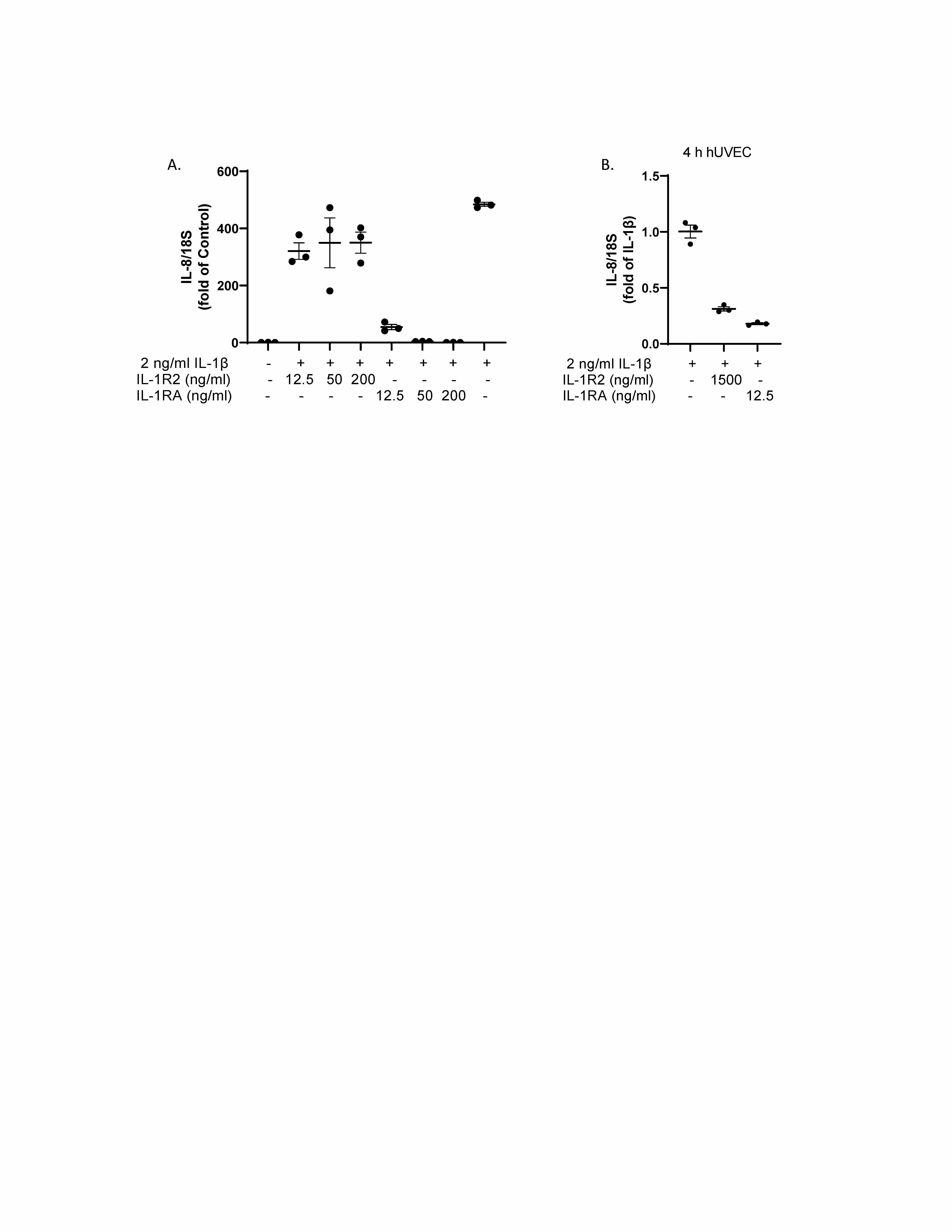Neonatology
Session: Neonatology Pulmonology Clinical Science 1: Bronchopulmonary Dysplasia
582 - IL-1RA and IL-1R2 have similar effects on IL-1β stimulated human umbilical vein endothelial cells
Saturday, May 4, 2024
3:30 PM - 6:00 PM ET
Poster Number: 582
Publication Number: 582.1083
Publication Number: 582.1083
- YJ
Yi Jin, PhD (she/her/hers)
research scientist
Research Institute at nationwide Children's Hospital
Columbus, Ohio, United States
Presenting Author(s)
Background: Bronchopulmonary dysplasia (BPD) is the most common co-morbidity following preterm birth and neonatal exposure to mechanical ventilation and/or supplemental oxygen are involved in the pathogenesis of BPD. The interleukin-1 (IL-1) family has been implicated in the pathophysiology of BPD, with IL-1β activation of IL-1 receptors having an important role. IL-1β binding to the IL-1 receptors is inhibited by the endogenously produced IL-1RA, a competitive antagonist and the decoy receptor IL-1R2. Both IL-1RA and IL-1R2 have been shown in pre-clinical models of BPD to be up-regulated, but not to the same degree or duration as IL-1β. Treatment with IL-1RA or IL-1R2, or analogues, has been studied in some inflammatory diseases.
Objective: To examine transcriptomic changes in human umbilical vein endothelial cells (hUVEC) in response to IL-1β, and to examine the effects of IL-1R2 versus IL-1RA in inhibiting these changes.
Design/Methods: hUVECs were treated with vehicle, or IL-1β with or without IL-1R2 or IL-1RA for 8 hours before harvesting RNA. Total RNA was isolated from hUVECs, solubilized, and quantified using spectrophotometer. RNA-seq analyses was performed as previously described (J Biol Chem 2023 Apr;299(4):103043). The fold change of transcripts for each gene was calculated relative to the average expression in hUVEC under the control condition, values were log2 transformed and a heatmap was generated, red indicates high expression, black indicates middle expression, and green indicates low expression.
Results: Treating hUVEC with IL-1β induced 744 unique transcripts that were upregulated by >2-fold and 601 unique transcripts that were downregulated by >2-fold compared to the vehicle treated cells. Using the KEGG database there were 25 pathways up-regulated by IL-1β treatment in hUVEC, while there were 3 pathways down-regulated, using a p-value cut-off of < 1x10-4. Both IL-1R2 or IL-1RA inhibited the IL-1β-mediated changes in mRNA expression in a dose-dependent manner, although at the same dosage IL-1RA was more effective than IL-1R2. Real-time PCR results for the selected genes IL-8 and MCP-1 showed similar results (Figure 2).
Conclusion(s): These data demonstrate that both IL-1R2 and IL-1RA significantly inhibited the IL-1β differentially expressed genes in hUVEC, while IL-1RA was more effective at lower doses compared to IL-1R2. These data add to our understanding of the roles of IL-1RA and IL-1R2 in dampening IL-1β-mediated inflammation, as well as for the design of future studies examining IL-1 receptor antagonists in preventing BPD.
.jpg)

